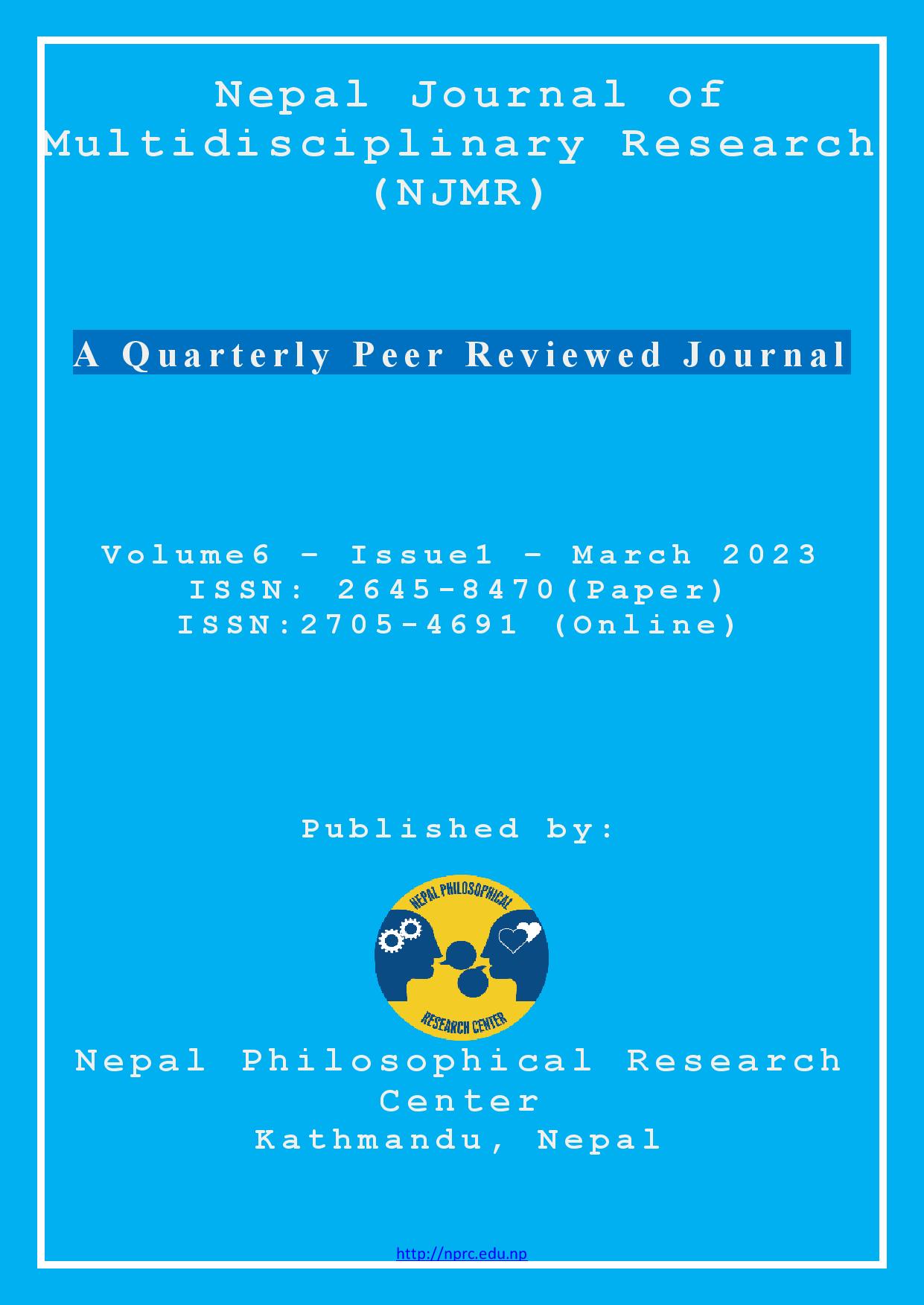Occurrence of Disaster Events and their Impact in Nepal: Role of Government and Civil Society Organizations to Reduce the Disaster Risks
DOI:
https://doi.org/10.3126/njmr.v6i1.54355Keywords:
Disaster Risk Reduction, Resilience, Vulnerability, Climate ChangeAbstract
Nepal is highly vulnerable to multiple geological, hydro and meteorological hazards in which floods, landslides, fires, avalanches, glacial lakes outburst floods, droughts and earthquakes are predominant. Nepal has also been experiencing outbreak of epidemics and pandemic having high morbidity and mortality. Every day, on an average, 2 people die due to recurrent disasters. Situated in seismic zone, Nepal is prone to earthquake, and it had experienced several episodes of earthquake having losses of human lives and physical infrastructure. Climate change attributing significantly in extreme weather conditions resulting heavy rainfall, drought, fire, and glacial lake outburst floods. The disasters events have severe impact in socio-economic and health of community people creating problem in access, disrupting supply chain, damage, and destruction of service delivery outlets. The main objective of this paper is to analyze the disaster situation in country, their impact and assess the role of government of Nepal and civil society organizations in reducing the disaster risks. This paper has been prepared by reviewing the secondary data mainly government, UN and I/NGOs reports and research articles. Marginalized groups of the society are hardest hit by the disasters. Investing resources in preparedness and risk reduction pays off in saving lives and properties, investing 1 NPR in DRR is equivalent to 18 NPR during post disaster situation. A whole of society approach where preparedness, risk reduction, response, recovery, and reconstruction go simultaneously in building resilience nations to disasters. Development work should mandatorily apply environmental impact assessment and do no harm principles. The government of Nepal has developed DRM Act, policy, and strategic plan. Accountability framework, risk governance and risk education play a critical role to achieve outcomes stipulated in the strategic plan.
Downloads
Downloads
Published
How to Cite
Issue
Section
License
Copyright (c) 2023 Pitambar Aryal

This work is licensed under a Creative Commons Attribution-NonCommercial 4.0 International License.
This license enables reusers to distribute, remix, adapt, and build upon the material in any medium or format for noncommercial purposes only, and only so long as attribution is given to the creator.




